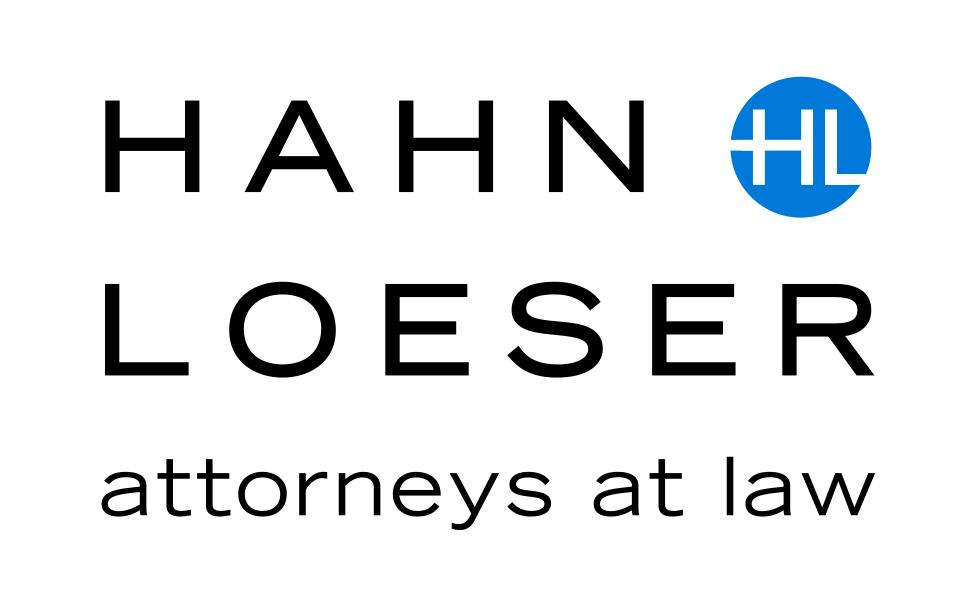On November 4, 2021 OSHA issued the COVID-19 Vaccination and Testing Emergency Temporary Standard (ETS). The ETS requires covered employers to develop, implement, and enforce a mandatory COVID-19 vaccination policy, with an exception for employers that instead establish, implement, and enforce a policy allowing employees who are not fully vaccinated to elect to undergo weekly COVID-19 testing and wear a face covering at the workplace. As of the date of this alert, the Fifth Circuit Court of Appeals has entered an order temporarily staying enforcement of the ETS pending further court action.
1. Who is covered?
Employers with 100 or more employees are covered and must comply with the ETS. The ETS does not apply to workplaces covered under the Safer Federal Workforce Task Force COVID-19 Workplace Safety: Guidance for Federal Contractors and Subcontractors. The ETS does not apply in settings where employees provide healthcare services or healthcare support services when subject to the requirements of the Healthcare ETS.
2. What employees are subject to the requirements?
All employees of a covered employer are subject to the requirements, subject to certain exemptions. Several categories of workers are exempted based on the characteristics of their work or workplace. Workers who do not report to a workplace where other individuals are present or who telework from home are exempted. Workers who perform their work exclusively outdoors are also exempted.
3. What are the key dates?
Workers will need to have the necessary shots to be vaccinated – either two doses of Pfizer or Moderna, or one dose of Johnson & Johnson, no later than January 4, 2022. After January 4, 2022, all covered employers must ensure that any employees who have not received the necessary shots begin producing a verified negative test to their employer.
While the testing requirement for unvaccinated workers will begin after January 4, 2022, employers must get in compliance with other requirements, such as providing paid time for employees to get vaccinated and masking for unvaccinated workers, by December 5, 2021.
4. What are the key vaccination requirements?
A. Exemptions from the Policy
An employer’s mandatory vaccination policy must require vaccination of all employees, other than those employees who fall into one of three categories: (1) those for whom a vaccine is medically contraindicated, (2) those for whom medical necessity requires a delay in vaccination, or (3) those who are legally entitled to a reasonable accommodation under federal civil rights laws because they have a disability or sincerely held religious beliefs that conflict with the vaccination requirement. The policy must also require all new employees to be vaccinated as soon as practicable.
B. Determining Vaccination Status
The ETS requires employers to determine the vaccination status of each employee, obtain acceptable proof of vaccination, maintain records of each employee’s vaccination status, and maintain a roster of each employee’s vaccination status.
C. Costs Associated with the Vaccine
The ETS requires employers to support vaccination by providing employees reasonable time, including up to four hours of paid time, to receive each vaccination dose, and reasonable time and paid sick leave to recover from side effects experienced following each dose.
Reasonable time may include, but is not limited to, time spent during work hours related to the vaccination appointment(s), such as registering, completing required paperwork, all time spent at the vaccination site (e.g., receiving the vaccination dose, post-vaccination monitoring by the vaccine provider), and time spent traveling to and from the location for vaccination (including travel to an off-site location (e.g., a pharmacy), or situations in which an employee working remotely (e.g., telework) or in an alternate location must travel to the workplace to receive the vaccine).
Employers are not, however, obligated by the ETS to reimburse employees for transportation costs (e.g., gas money, train/bus fare, etc.) incurred to receive the vaccination (although reimbursement may be required pursuant to state law or collective bargaining agreement). This could include the costs of travel to an off-site vaccination location (e.g., a pharmacy) or travel from an alternate work location (e.g., telework) to the workplace to receive a vaccination dose. Because employers are required to provide reasonable time for vaccination during work hours, if an employee chooses to receive a primary vaccination dose outside of work hours, employers are not required to grant paid time to the employee for the time spent receiving the vaccine during non-work hours. However, even if employees receive a primary vaccination dose outside of work hours, employers must still afford them reasonable time and paid sick leave to recover from side effects that they experience during scheduled work time.
D. Required Information in the Policy
To ensure that employers’ vaccination policies are comprehensive and effective, the policies should address the key requirements, including: requirements for COVID-19 vaccination; applicable exclusions from the written policy; information on determining an employee’s vaccination status and how this information will be collected; paid time and sick leave for vaccination purposes; notification of positive COVID-19 tests and removal of COVID-19 positive employees from the workplace; information to be provided to employees; and disciplinary action for employees who do not abide by the policy. The employer should include all relevant information regarding the policy’s effective date, who the policy applies to, deadlines (e.g., for submitting vaccination information, for getting vaccinated), and procedures for compliance and enforcement, all of which are necessary components of an effective plan. OSHA provides policy templates on the ETS website.
E. What Information Should Be Provided to Employees?
The ETS requires employers to provide employees the following in a language and at a literacy level the employees understand: (1) information about the requirements of the ETS and workplace policies and procedures established to implement the ETS; (2) the CDC document “Key Things to Know About COVID-19 Vaccines”; (3) information about protections against retaliation and discrimination; and (4) information about laws that provide for criminal penalties for knowingly supplying false statements or documentation.
5. What are the key COVID-19 testing requirements?
A. Timeframe for Testing
The ETS requires employers to ensure that each employee who is not fully vaccinated is tested for COVID-19 at least weekly (if in the workplace at least once a week) or within 7 days before returning to work (if away from the workplace for a week or longer).
Specifically, covered employers must ensure that each employee who is not fully vaccinated and reports at least once every seven days to a workplace where other individuals (e.g., co-workers, customers) are present: (A) is tested for COVID-19 at least once every seven days; and (B) provides documentation of the most recent COVID-19 test result to the employer no later than the 7th day following the date on which the employee last provided a test result. Employers must ensure these unvaccinated employees are tested at least once every seven calendar days, regardless of their work schedule. For example, an unvaccinated part-time employee who is scheduled to work only every Monday and Tuesday must still be tested at least once every seven days. Because employees must provide documentation of their most recent COVID-19 test results to their employers no later than the 7th day following the date on which they last provided a test result, employees may want to set a schedule for their testing (e.g., get a COVID-19 test every Wednesday). A consistent testing day may help employees ensure their documentation is provided every seven calendar days.
Additionally, the ETS addresses the situation where an employee does not report to a workplace where other individuals, such as coworkers or customers, are present during a period of seven or more days (e.g., when an employee is teleworking for an extended period of time). In such cases, the employer must ensure the employee is tested for COVID-19 within seven days prior to returning to the workplace and provides documentation of that test result to the employer upon return to the workplace. Importantly, the employee’s test must occur within the seven days before the employee is scheduled to report to the office, but it also must happen early enough to allow time for the results to be received before returning to the workplace. Similarly, unvaccinated new hires would need to be tested for COVID-19 within seven days prior to reporting to a workplace where other employees will be present and provide documentation of their test results no later than arrival on their first day of work
B. Required Type of Test
OSHA expects that most screening testing will be antigen testing that is conducted at point-of-care locations due to the reduced cost and faster processing time when compared to NAAT testing in laboratories. Most NAATs need to be processed in a laboratory with variable time to results (approximately 1–2 days). In contrast, most antigen tests can be processed at the point of care with results available in about 15-30 minutes. Rapid point-of-care tests are administered in various settings, such as: physician offices, urgent care facilities, pharmacies, school health clinics, workplace health clinics, long-term care facilities and nursing homes, and at temporary locations, such as drive-through sites managed by local organizations. COVID-19 tests that are both self-administered and self-read do not meet the definition of “COVID-19 test” in the ETS (unless observed by the employer or an authorized telehealth proctor) and do not satisfy the testing requirements.
C. Delayed Testing Results
OSHA recognizes that where the employee or employer uses an off-site laboratory for testing, there may be delays beyond the employee’s or employer’s control. In the event that there is a delay in the laboratory reporting results and the employer permits the employee to continue working, OSHA will look at the pattern and practice of the individual employee or the employer’s testing verification process and consider refraining from enforcement where the facts show good faith in attempting to comply with the standard.
D. Employer Policy Requirements
The employer must specify how testing will be conducted (e.g., testing provided by the employer at the workplace, employees independently scheduling tests at point-of-care locations, etc.). The employer must also specify in their policy how employees should provide their COVID-19 test results to the employer (e.g., an online portal, to the human resources department). Test results given to the employer must contain information that identifies the worker (i.e., full name plus at least one other identifier, such as date of birth), the specimen collection date, the type of test, the entity issuing the result (e.g., laboratory, healthcare entity), and the test result.
E. Cost of the Test
The ETS does not require employers to pay for the cost of COVID-19 tests. Employees who choose not to be vaccinated will bear the cost of the test. Although this ETS does not require employers to pay for testing, employer payment for testing may be required by other laws, regulations, or collective bargaining agreements or other collectively negotiated agreements. This section also does not prohibit the employer from paying for costs associated with testing. OSHA leaves the decision regarding who pays for the testing to the employer. Because OSHA does not specify who pays for the testing, OSHA expects that some workers and/or their representatives will negotiate the terms of payment. OSHA has also considered that some employers may choose to pay for some or all of the costs of testing as an inducement to keep employees in a tight labor market. Other employers may choose to put the full cost of testing on employees in recognition of the employee’s decision not to become fully vaccinated.
It is also possible that some employers may be required to cover the cost of testing for employees pursuant to other laws or regulations. OSHA notes, for instance, that in certain circumstances, the employer may be required, under the Fair Labor Standards Act, to pay for the time it takes an employee to be tested (e.g., if employee testing is conducted in the middle of a work shift). The subject of payment for the costs associated with testing pursuant to other laws or regulations is beyond OSHA’s authority and jurisdiction.
F. Employees Who Test Positive
The ETS requires employers to: (1) require employees to promptly provide notice when they receive a positive COVID-19 test or are diagnosed with COVID-19; (2) immediately remove any employee from the workplace, regardless of vaccination status, who received a positive COVID-19 test or is diagnosed with COVID-19 by a licensed healthcare provider; and (3) keep removed employees out of the workplace until they meet criteria for returning to work.
Additionally, when an employee has received a positive COVID-19 test, or has been diagnosed with COVID-19 by a licensed healthcare provider, the employer must not require that employee to undergo COVID-19 testing for 90 days following the date of their positive test or diagnosis. This provision is specifically intended to prohibit screening testing for 90 days because of the high likelihood of false positive results that do not indicate active infection but are rather a reflection of past infection.
G. Maintaining Records
The employer must maintain a record of each test result required to be provided by each employee. These records must be maintained in accordance with 29 CFR 1910.1020 as an employee medical record and must not be disclosed except as required by this ETS or other federal law. However, these records are not subject to the retention requirements of 29 CFR 1910.1020(d)(1)(i), employee medical records, but must be maintained and preserved while this ETS remains in effect. These test result records contain personally identifiable medical information and must be maintained in a confidential manner.
6. What must an employer report to OSHA?
The ETS requires employers to report work-related COVID-19 fatalities to OSHA within eight hours of learning about them, and work-related COVID-19 in-patient hospitalizations within 24 hours of the employer learning about the hospitalization.
7. What records must be made available?
The ETS requires employers to make available for examination and copying an employee’s COVID-19 vaccine documentation and any COVID-19 test results to that employee and to anyone having written authorized consent of that employee. Employers are also required to make available to an employee, or an employee representative, the aggregate number of fully vaccinated employees at a workplace along with the total number of employees at that workplace.
8. What are the requirements for face coverings?
The ETS requires employers to ensure that each employee who is not fully vaccinated wears a face covering when indoors or when occupying a vehicle with another person for work purposes, except in certain limited circumstances. Employers must not prevent any employee, regardless of vaccination status, from voluntarily wearing a face covering unless it creates a serious workplace hazard (e.g., interfering with the safe operation of equipment).
Although strongly encouraged, OSHA is not requiring the use of face coverings by workers who are fully vaccinated because vaccination is sufficient to reduce the danger to themselves or others.



